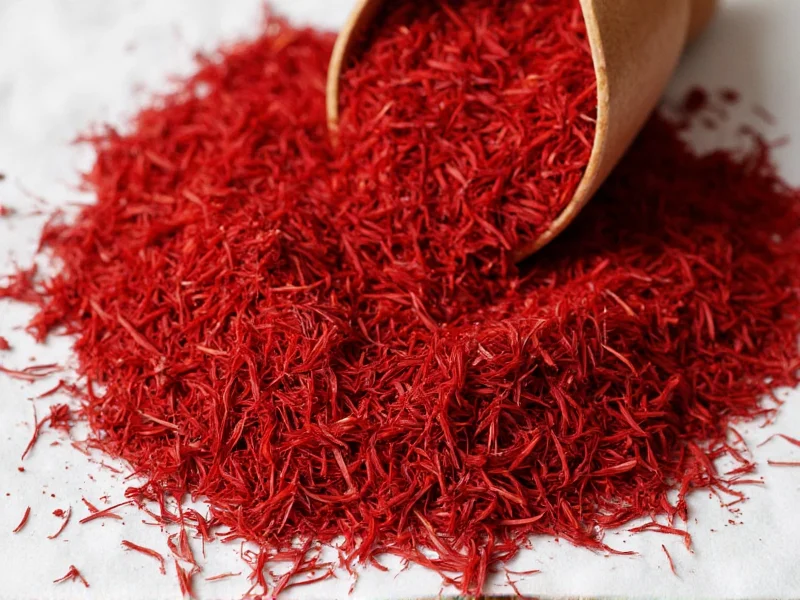When considering saffron by the pound, understanding the dramatic price differences between quality tiers is essential for making an informed purchase. Unlike retail packages sold in small quantities, bulk saffron transactions involve significant financial investment that demands careful evaluation of quality indicators, supplier credibility, and proper storage requirements. This guide provides objective information about wholesale saffron pricing, quality assessment, and practical considerations for buyers exploring pound-quantity purchases.
Understanding Saffron Quality Grading Systems
The ISO 3632 international standard provides the most reliable framework for evaluating saffron quality. This system measures three critical components through spectrophotometry:
| Quality Parameter | Measurement Method | Category I Threshold | Category II Threshold |
|---|---|---|---|
| Coloring Strength (Crocin) | Light absorption at 440nm | ≥ 190 | 150-189 |
| Aroma (Safranal) | Light absorption at 330nm | ≥ 50 | 35-49 |
| Bitterness (Picrocrocin) | Light absorption at 257nm | ≥ 80 | 60-79 |
Category I saffron, commanding premium prices of $4,000-$6,000 per pound, demonstrates superior coloring strength, aroma, and flavor intensity. Category II saffron ($2,500-$4,000 per pound) remains suitable for culinary applications but shows slightly reduced potency. Commercial grade saffron (under $2,500 per pound) often contains significant amounts of yellow styles or other adulterants that diminish quality.
Factors Influencing Bulk Saffron Pricing
Several critical elements determine wholesale saffron costs when purchasing by the pound:
Origin and Production Methods
Iran produces approximately 90% of the world's saffron, with Spanish and Kashmiri varieties commanding premium prices due to specialized cultivation techniques. Hand-harvested saffron from traditional growing regions typically costs 20-30% more than mechanically assisted harvests, reflecting the superior quality achieved through careful manual processing.
Market Volatility Factors
Saffron prices fluctuate significantly based on:
- Annual harvest yields (drought conditions can increase prices by 30-50%)
- Currency exchange rates affecting major producing countries
- Global demand from food manufacturers and pharmaceutical companies
- Supply chain disruptions impacting international shipping
Identifying Authentic Bulk Saffron
When purchasing saffron by the pound, verification of authenticity becomes critically important. Reputable wholesale suppliers should provide:
- Current ISO 3632 laboratory analysis reports
- Traceable harvest information including origin and date
- Proper moisture content documentation (8-12% ideal range)
- Clear packaging showing thread count per gram
Physical indicators of premium quality saffron include deep red threads with minimal yellow styles, strong hay-like aroma with sweet floral notes, and rapid coloring power when steeped in warm liquid. Be wary of suspiciously low prices—authentic saffron cannot legally cost less than $1,500 per pound when accounting for production costs.
Storage Requirements for Pound-Quantity Purchases
Proper storage becomes essential when buying saffron in bulk. Exposure to light, moisture, or oxygen rapidly degrades saffron's quality. For pound-quantity purchases, implement these storage protocols:
- Divide bulk purchases into smaller airtight containers with oxygen absorbers
- Maintain storage temperature between 50-60°F (10-15°C)
- Use opaque containers to prevent light exposure
- Monitor humidity levels to stay below 40% RH
- Consume within 18-24 months for optimal flavor and coloring power
Commercial buyers often use vacuum-sealed packaging with nitrogen flushing for extended shelf life. Home users purchasing saffron by the pound should consider dividing their purchase into 1-2 ounce portions to minimize repeated exposure to air during use.
Evaluating Cost-Effectiveness of Pound Purchases
Determining whether buying saffron by the pound makes financial sense depends on your usage patterns. Consider these calculations:
- A single pound contains approximately 7,000-8,000 servings (based on 0.2g per serving)
- At $5,000 per pound, each serving costs approximately $0.63
- Retail packages typically cost $1.50-$3.00 per serving
- Break-even point occurs after using approximately 2,500 servings
Professional kitchens, commercial food manufacturers, or serious saffron enthusiasts who use significant quantities regularly will benefit from pound purchases. Occasional home cooks typically find smaller retail packages more practical given saffron's limited shelf life. Calculate your annual usage before committing to bulk quantities.
Supplier Verification Process
When sourcing saffron by the pound, implement these verification steps to ensure quality:
- Request current ISO 3632 laboratory certificates from independent testing facilities
- Verify supplier credentials through industry associations like ISAO (International Saffron Association)
- Obtain physical samples before placing large orders
- Check for consistent thread appearance and minimal broken particles
- Confirm packaging includes harvest date and origin documentation
Reputable wholesale suppliers welcome these verification requests and provide transparent documentation. Be cautious of suppliers who cannot produce current laboratory analyses or who offer prices significantly below market rates.
Frequently Asked Questions
How much does a pound of premium saffron cost?
Premium ISO 3632 Category I saffron typically costs between $4,000 and $6,000 per pound. The price reflects the labor-intensive harvesting process requiring approximately 450,000 hand-picked stigmas to produce one pound of dried saffron threads.
Is buying saffron by the pound cost-effective for home use?
For most home cooks, purchasing saffron by the pound is not cost-effective. A single pound contains 7,000-8,000 servings, and saffron degrades over time. Unless you use saffron weekly in significant quantities, smaller retail packages provide better value and freshness.
How can I verify if bulk saffron is authentic?
Authentic bulk saffron should come with current ISO 3632 laboratory analysis reports showing crocin, safranal, and picrocrocin measurements. Physical verification includes checking for deep red threads with minimal yellow styles, strong floral aroma, and rapid coloring power when steeped in warm water.
What's the shelf life of saffron purchased by the pound?
Properly stored saffron maintains peak quality for 18-24 months. Store in airtight, opaque containers at 50-60°F with humidity below 40% RH. Divide bulk purchases into smaller portions to minimize air exposure during use, as repeated opening accelerates degradation.
Why does saffron price vary so dramatically by quality grade?
Price differences reflect measurable quality variations in coloring strength, aroma, and flavor compounds. Premium Category I saffron contains significantly higher concentrations of crocin (color), safranal (aroma), and picrocrocin (bitterness) than lower grades, requiring more flowers and careful processing to achieve these standards.











 浙公网安备
33010002000092号
浙公网安备
33010002000092号 浙B2-20120091-4
浙B2-20120091-4